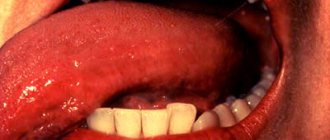- Teeth whitening, a method of restoring the aesthetic appearance of teeth that allows satisfying the requirements of the most demanding patients, is also of great interest to doctors and their patients.
- Does teeth whitening really have any contraindications?
- Contraindications exist. Conventionally, they can be divided into 2 groups: general and dental.
- Can teeth whitening be done only in a clinic setting?
- Currently, there are both clinical and at-home teeth whitening options.
General contraindications are an allergic reaction to the bleaching reagent, pregnancy and breastfeeding, and the patient's minority.
Dental contraindications include extensive carious cavities, the presence of exposed tooth necks, erosions and other defects in the cervical area, gum disease, and orthodontic treatment. In addition, dental contraindications: - problems associated with the condition of the enamel. These are deep cracks on it, its significant age-related or pathological decline, the presence of tooth restorations.
A combination of these methods is possible. However, you still need to consult with a specialist first. The dentist will distinguish the teeth that really need to be whitened from those that only seem dark, clearly identify contraindications, and stop the process itself in time, accompanied, by the way, by taking photographs, allowing you to see the result with your own eyes. In addition, in each specific case it is necessary to compare the positive effect with possible risks to dental health.
No matter how attractive teeth whitening may be, it is the dentist who knows what can and should be offered in each specific case. After all, it is important not only to get immediate results, but also to give the patient the joy of a snow-white smile for many years.
For more information about in-office teeth whitening, read the article The Secret of a Snow-White Smile.
Types of in-office teeth whitening
The classification is determined by the ways in which the bleaching process is started. A whitening gel is applied to the tooth enamel and does not act until it is activated. If the trigger is a laser beam, then the whitening is called laser. If a special lamp (usually ultraviolet) is used for activation, then we are talking about photobleaching.
What stands apart here is the so-called intra-canal bleaching, which is used for pathological darkening of the tooth. Tooth whitening is carried out from the inside. After the required time, the whitening gel is removed and the canal is sealed.
The essence of the whitening procedure
Teeth whitening is based on a couple of factors:
- Exposure to hydrogen peroxide entering the enamel and causing an oxidation process that destroys dyes.
- Ultraviolet, halogen or LED lamps and a laser beam speed up the reaction and make the procedure more effective.
After such an intervention, the teeth will become vulnerable:
- the enamel layer loosens, carious spots appear on it;
- sensitivity will increase;
- the likelihood of soft tissue irritation increases.
Proper dental care helps maintain the whitening effect for a long time and strengthen weakened enamel.
Preparation and carrying out the procedure
Preparation for whitening involves thorough sanitation of the oral cavity, which includes the elimination of the slightest defects in the teeth, as well as getting rid of tartar. Particular attention is paid to the “smile zone,” that is, the teeth that you show to others in moments of fun.
How does teeth whitening work? The mucous membranes of the mouth are pre-isolated. Lips and eyes are protected. The doctor takes the gel from the refrigerator, applies it to the teeth, and then activates it. As a rule, the procedure takes no more than an hour.
Is Iqos harmful to human teeth?
The harm of regular cigarettes has been scientifically proven. There is evidence of irreparable damage to the health of smokers. Throughout the day, a lot of life-threatening elements enter their bodies along with smoke. Including the harm of cigarettes is visible even from the outside: teeth turn yellow, tartar appears. That's why cigarette substitutes have been developed.
Footnote! The most popular today is IQOS. This is a special device that heats tobacco. The user does not inhale smoke, which means the risk of harmful substances entering the body is reduced.
The smoker inhales not smoke, but tobacco aerosol. Hazardous substances, including resins, do not penetrate the body. IQOS is much less harmful to teeth than regular cigarettes.
Footnote! Studies have shown that when using an electronic tobacco heating system, a person is exposed to 80–95% less harmful substances. This also applies to their penetration into the oral cavity.
Dentists note the following benefits of using IQOS:
- Dark plaque does not appear on the teeth. Resins do not penetrate into the oral cavity and do not affect the natural color of teeth.
- The risk of tartar formation is reduced. Brown plaque is considered the first sign of this problem. Since there is no dark plaque, the risk of stone formation is reduced.
- The risk of periodontal disease is reduced. The reason is the same: smoke does not affect the inner surface of the cheeks, oral cavity, or gums.
In addition, the IQOS user does not experience such unpleasant sensations as dry mouth, burning, and bitterness.
Recommendations after teeth whitening
We recommend reading about what you will need to do after teeth whitening in advance, even before the procedure, in order to mentally prepare for, albeit small, but still restrictions.
So, count 72 hours after bleaching, during which it is better to replace your usual drinks with dairy products or plain water, and choose porridge, boiled potatoes, cabbage, legumes, as well as meat or fish as main dishes. For dessert, you have to temporarily forget about chocolate and bright caramels. In general, say “no!” to coloring and oxidizing agents.
Someone will ask: “Is it possible to smoke after teeth whitening?” The answer is again clear: “No!” Smoking is, in principle, detrimental to health, and even more so to beauty.
Now let’s cover the topic of possible complications after teeth whitening. There are no complications: the teeth do not deteriorate and do not fall out. Another thing is that another patient may complain that his teeth ache after whitening, and he asks what to do. In fact, tooth sensitivity may increase after whitening, this is explained by the activity of the products used. You can relieve discomfort with special pastes and rinses - your dentist will recommend them. In any case, it is necessary to see a doctor, because the pain could be provoked by a pathological process in the oral cavity that has worsened as a result of the procedure. This once again emphasizes the importance of thorough preparation for whitening.
Oral care
In addition to proper nutrition, we follow the rules of hygiene:
- We brush our teeth with a soft-bristled brush so as not to increase sensitivity.
- The paste should not contain abrasive components that damage the enamel layer. For two to three weeks after whitening, use a sensitivity-reducing toothpaste to brush your teeth, then switch to fluoride-containing products to strengthen your enamel and protect it from tooth decay.
- After your next meal, treat your teeth with an irrigator or floss - make it a habit.
- Use rinses that do not contain chlorhexidine, which stains enamel.
- Visit the dentist's office several times a year.
Electronic smoking devices are an alternative option for the most heavy smokers who cannot part with cigarettes. They are less harmful to the human body in general, and a limited number of elements enter the mouth that cannot have a significant effect on enamel pigmentation, the formation of plaque, tartar, and the appearance of periodontal disease.
You should listen to the recommendations of doctors and choose the safest smoking option, which significantly reduces the risk of general disease and the oral cavity in particular.
About the effect on implants
Low chance of implant failure.
Implant failure is indicated by:
- inflammation and swelling of the gums, accompanied by pain;
- bleeding gums;
- strong pain;
- body temperature is higher than 38oC;
- discharge of pus and bad breath;
- mobility or, in fact, loss of the structure installed by the dentist.
This is due to damage to the oral cavity by the high temperature of the smoke, as a result of which the layer of the epidermis becomes thicker, and the risk of developing peri-imlantitis increases. This usually occurs from smoking cigarettes.
However, there is information that not only smoke causes dental problems, but also factors such as large temperature changes, from hot smoke to cold air. This is also worth considering.
conclusions
So, smokers should take into account what dentists say about the effect of IQOS on the condition of teeth. If you have no desire to give up smoking, choosing devices for heating tobacco will most likely be more successful.
Although switching to IQOS may cause unpleasant symptoms, there will still be significantly less harm to health. Sticks for this device are a little more expensive than regular cigarettes, and here it’s worth deciding whether it’s worth saving on your health. Only IQOS causes addiction to nicotine in the same way as cigarettes. There are also unpleasant side effects and harm to health, so the greatest benefit for teeth, and health in general, will be a complete cessation of any type of smoking.
What not to eat
- Beets, tomatoes, carrots;
- Citrus fruits, watermelon, mango;
- Dark berries;
- Coffee, tea, cocoa;
- Red and rose wine;
- Lemonade, fruit drink;
- Ketchup, soy sauce, etc.;
- Egg yolk;
- Jam, jam;
- Chocolate, candy, caramel;
- Spices and seasonings;
- Chips, crackers;
- Any other foods and drinks containing dye.
Important! If you consume an illegal food or drink, immediately brush your teeth or use mouthwash.
What can you eat
List of healthy permitted foods:
- cottage cheese, milk, low-fat sour cream, yogurt without additives;
- cucumbers, cabbage, potatoes, asparagus, celery;
- green grapes, pears, peeled apples, bananas;
- unleavened cheese;
- clear broth;
- white lean meat;
- seafood;
- white fish;
- mushrooms;
- some types of nuts;
- egg white;
- oatmeal, buckwheat and rice porridge;
- bread;
- pasta without sauce;
- water, clear fruit compote.
Even after 48 hours, experts recommend drinking weak green tea through a straw.
No bad breath
Most smokers, especially heavy smokers, are bothered by bad breath.
Therefore, the question arises, are there any such consequences from the use of devices used to heat tobacco?
Dentists assure that such consequences are unlikely from IQOS.
After directly using IQOS, there is no smell of tobacco on your breath, nor on your hands, which is also an advantage.
Myth #2: Whitening strips destroy enamel.
If you use them correctly, no. In any case, before carrying out this procedure for yourself, you must carefully read the instructions for your specific whitening strips. The rules are purely individual: some strips need to be kept on your teeth for half an hour, others will have to be left overnight. The main thing is not to overexpose them, because then they can really negatively affect the condition of the enamel. However, the effect will not be noticeable in one procedure: as a rule? The strips must be used in a course. Then your teeth can be whitened by 1-5 shades (more - only after professional whitening at the dentist).
There are also general features of using whitening strips. Before using them, you should not brush your teeth, and, of course, it is not recommended to eat food while they are on your teeth. After the strips, tooth sensitivity may be increased for some time, so for the first time it is advisable to give up coffee, red wine and smoking.
Main rules
After the teeth whitening procedure, you should follow simple rules:
— It is not recommended to eat for three hours after the procedure.
— Your daily diet should include foods high in calcium and fluoride, namely dairy products, eggs and fish.
— From your daily diet you need to exclude foods that can stain the enamel, for example, coffee, berries, juices. It is also recommended to eat solid and hot foods.
— For a week you need to adhere to a special diet recommended by the dentist.
Vaping and IQOS: a dangerous trend?
November 23, 2019
Thanks to the efforts of tobacco companies, it is believed that electronic cigarettes are a harmless fashionable entertainment. It has gotten to the point that some, if I may say so, doctors even “prescribe” vapes to those who want to quit smoking, as an easy and harmless alternative to tobacco. But vaping and heating systems for tobacco (such as Juul or IQOS) are far from safe: they can lead to even more serious health complications than smoking regular cigarettes. And the point here is not so much in the proven harm of tobacco, but in the design of the electronic devices themselves, as well as the substances that make up the mixture for vaping.
Vapes and IQOS are smoking devices that are preferred mainly by young people. Even among schoolchildren, smoking electronic cigarettes is becoming fashionable. This popularity is due to a certain “entourage”: clouds of aromatic smoke when vaping, special devices that are perceived as a stylish and unique accessory, the ability to smoke almost anywhere due to the lack of legal regulation and, of course, aggressive advertising and promotion of these products. All this makes vapes and IQOS attractive to young people. However, behind a beautiful picture, as often happens, hides a not-so-pretty essence.
Nicotine, metals, salts, flavorings - what do vapers inhale?
95% of vape blends contain nicotine. Its content is by no means less, and sometimes even more, than in a cigarette. Nicotine is synthetic, in IQOS it is often added to tobacco, and inhaling such nicotine using electronic devices leads to even more severe negative consequences than with regular smoking: first of all, to rapid addiction, as well as cardiovascular diseases, strokes, and infertility , cognitive disorders in children, malignant neoplasms, etc. Thus, the risk of developing these diseases remains high for both smokers of regular cigarettes and fans of vapes. Harmful metals in the heating element.
Some of these metals accumulate in the body, causing a number of serious conditions and diseases of the cardiovascular and nervous systems. Electronic cigarettes also differ in the way they produce and deliver smoke.
So, when using vapes, a special mixture is heated, and in IQOS, tobacco is heated (although at a heating temperature of the element of 350° this is the same combustion), which is why aerosols are formed for inhalation. And here lies the second dangerous point - particles of harmful metals that make up the heating element enter the human body. As noted in research by scientists from Ohio State University, the breakdown products of vapes and e-cigarettes are ultra-fine (approximately 2.5 microns) particles that easily penetrate aerosols into lung tissue, the circulatory system and heart tissue. Some of these metals accumulate in the body, causing a number of serious conditions and diseases of the cardiovascular and nervous systems. Salts of various metals and aromatic substances, which are contained in each smoking mixture, lead to inflammatory processes in the walls of blood vessels, atherosclerosis, as well as damage to lung tissue.
The composition of the mixture for electronic gadgets is another topic for in-depth research, which is already actively being conducted in scientific institutes in the USA, Europe, and Australia. At the moment, scientists have not reached a consensus on the influence of the substances included in the smoking mixture. This is due to the fact that many manufacturers do not write the exact composition of the mixtures, which complicates research. However, almost the entire scientific community agrees that some of the substances from these mixtures have extremely negative effects. Thus, employees of the University of Tasmania were able to prove that salts of various metals and aromatic substances, which are contained in each smoking mixture, lead to inflammatory processes in the walls of blood vessels, atherosclerosis, as well as damage to lung tissue.
Salts of various metals and aromatic substances, which are contained in each smoking mixture, lead to inflammatory processes in the walls of blood vessels, atherosclerosis, as well as damage to lung tissue.
Not only nicotine is the most dangerous substance in electronic cigarettes
An example of the negative impact of electronic cigarettes on health is the epidemic of deadly pneumonia that was recorded in the USA and Great Britain. About 40 people have died and more than 2,000 people are now being treated for so-called “vaping disease,” or EVALI (e-cigarette, or vaping, product use associated lung injury). Specialists from the US Centers for Disease Prevention and Control, trying to determine the cause of this disease, studied fluid samples from the lungs of deceased patients. It turned out that in all cases, the development of a fatal lung condition could be provoked by a synthetic form of vitamin E - vitamin E acetate, which is part of smoking mixtures. Most often, vitamin E acetate is found in mixtures where marijuana extracts (tetrahydrocannabinol) are also added. According to preliminary data, it is this combination that provokes a number of complications characteristic of “vaping disease” - in 82% of cases of EVALI symptoms, it was found that patients had recently smoked similar mixtures. However, it is also impossible to exclude the presence of vitamin E acetate in vaping liquids that do not indicate the composition. Moreover, it was found that the symptoms of EVALI in 62% of cases are characteristic of patients who smoked widespread and legal mixtures with nicotine. Scientists do not rule out that the cause of “vaping disease” may be other combinations of substances included in smoking mixtures. Therefore, the message of the European Respiratory Society regarding any consumption of these products is categorical and simple: “No!”
“Vape disease” as a natural consequence of smoking
Cases of EVALI have not yet been recorded in Russia, but doctors suggest that this is only a matter of time.
Therefore, it is important to think about your health now, and if it is not yet possible to give up smoking e-cigarettes completely, it is important to know the symptoms of “vaping disease” so as not to delay seeing a doctor. Thus, the first signs of lung damage from smoking e-cigarettes—shortness of breath, chest pain, severe cough, respiratory failure—were reported in 95% of EVALI cases in the United States. In approximately 70% of cases, the disease manifested itself as an upset stomach - nausea, vomiting, and diarrhea. In 85% of cases, fever, chills, and weight loss were noted. Such symptoms are also characteristic of pneumonia, so in any case you should not put off visiting a doctor. The problem also lies in the fact that pneumonia is an “understandable” disease in terms of treatment. But with the “vaping disease” it is more complicated: doctors have to select individual therapy in each specific case, which is associated with certain risks for the patient. Thus, even if the vape mixture does not contain nicotine, smoking electronic cigarettes can pose no less a threat to the body than smoking tobacco. It turns out that electronic devices are not a harmless alternative to tobacco. But so far in our country there is no legislative regulation of electronic cigarettes, unlike the regulation of tobacco products. Therefore, “to vape with impunity or not” is still up to the person’s conscience and depends on how much he knows about the dangers of these products. Therefore, any efforts that help make a choice in favor of “clean” breathing are important. For example, Apple removed from the App Store all applications that were designed to make vaping easier and more convenient. These measures were taken after vaping deaths in an attempt to help users, especially young people, stay healthy. But more important are comprehensive legislative measures to regulate vaping and IQOS, to stop their victorious march in our country. Prime Minister Dmitry Medvedev has already supported the initiative of the Russian Ministry of Health to equate e-cigarettes with conventional cigarettes in regulatory matters. He indicated that he does not see any difference in what form smoking occurs. Research on the impact of vaping on human health continues, but even the data that is available today is enough to say: vaping, like smoking, is a dangerous trend.
Tags:
- E-Sigs
- vaping
- IQOS
- lung disease
To leave a comment you must be an authorized user










